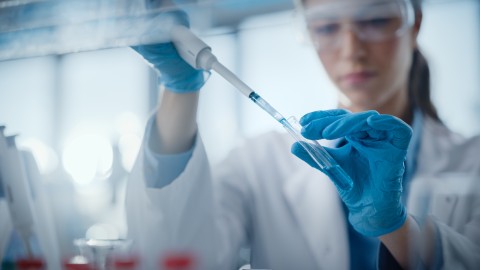

Thuwal, Saudi Arabia, 1st August 2023 / Sciad Newswire / Researchers uncover a detailed action mechanism for protein MRG15, an important consideration for drugs targeting ASH1L which is overexpressed in many cancers. The findings from King Abdullah University of Science and Technology (KAUST), Saudi Arabia and the University of Michigan, U.S, could implicate the design of future cancer treatments.
Cancer-related protein ASH1L has been an attractive target for cancer drug discovery and current therapies have been accounting for the interaction of a second protein called MRG15 because it regulates ASH1L activity. The relationship between MRG15 and ASH1L has been widely debated in the field of cancer research, with uncertainty around how specific MRG15 domains are involved in ASH1L activation.
In the new study, the researchers demonstrated that multiple MRG15 domains are required to activate ASH1L. Although they found that a previously known MRG15 domain only binds to ASH1L, a second MRG15 domain was responsible for the nucleosome recruitment which contributes to activation. MRG15 binds to ASH1L and the nucleosome simultaneously; a newly discovered mechanism in the MRG15-ASH1L interaction.
“We found that the whole MRG15 structure, and not just some segments, acts only as an adapter protein for ASH1L to methylate histones”, explained Samah Al Harthi, the primary author of the study.
The implications for drug design are related to the part of ASH1L known as the autoinhibitory loop. Some research groups have previously found the shape of this loop changes upon MRG15 binding, while others show activation can occur without MRG15.
The structure-dynamics study shows MRG15 had no effect on the loop, and the simultaneous binding to ASH1L and the nucleosome illuminates alternative drug design strategies that could be more effective at reducing ASH1L expression in tumours.
The theory is supported by previous research from the Michigan team showing that inhibitors of ASH1L act by binding near this loop to reduce the pathological proliferation of leukemia cells. The current study showed that MRG15 had no effect on the potency of these inhibitors or their binding to ASH1L.
“Our findings show that current experimental inhibitors targeting ASH1L are not affected by MRG15. Therefore, some protein-protein interactions do not have to be a major consideration in drug design,” said KAUST Associate Professor Lukasz Jaremko, a structural biologist who led the study.
ENDS
For further information, please contact:
Sciad Communications, Media Relations
Amy Thomas
E: Kaust@sciad.com
T: +44 (0)20 3405 7892
Notes for Editors
About KAUST
Established in 2009, King Abdullah University of Science and Technology (KAUST) is a graduate research university devoted to finding solutions for some of the most pressing scientific and technological challenges in the world as well as Saudi Arabia in the areas of food and health, water, energy, environment and the digital domain. KAUST is a curiosity-driven, interdisciplinary problem-solving environment, with state-of-the-art labs, distinguished faculty and talented students.
KAUST brings together the best minds from around the world to advance research. More than 120 different nationalities live, work and study on campus. KAUST is also a catalyst for innovation, economic development and social prosperity, with research resulting in novel patents and products, enterprising startups, regional and global initiatives, and collaboration with other academic institutions, industries and Saudi agencies.
For additional information, visit www.kaust.edu.sa.
